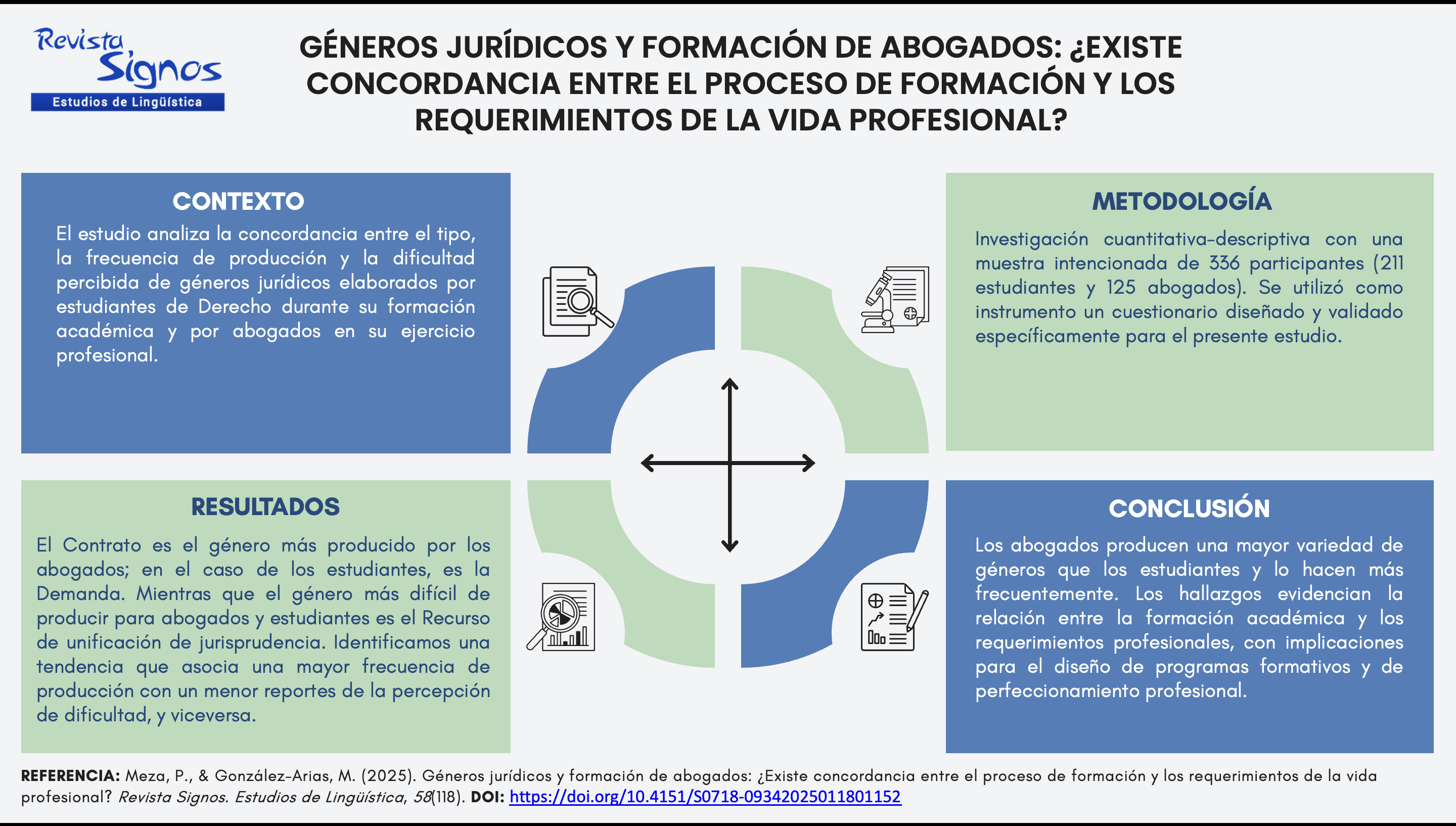Legal genres and lawyers’ training
is there a match between the teaching process and the demands of professional life?
DOI:
https://doi.org/10.4151/S0718-09342025011801152Keywords:
specialized discourse, writing text, legal genres, lawyers, law studentsAbstract
This research aim is to establish the concordance between the type, frequency of production, and perceived level of difficulty of legal genres produced by law students during their academic training and by lawyers in their professional practice. We developed a quantitative-descriptive investigation with a non-random and intentional sample, made up of 336 voluntary participants (211 law students and 125 lawyers), who answered a questionnaire designed and validated for this study. Among the main results, in terms of frequency, the Contract is the genre most produced by lawyers; on the other hand, in the case of students, it is the Demand. Regarding the degree of difficulty, the most difficult genre for lawyers and students is the Jurisprudence Unification Resource. In conclusion, in general, lawyers produce a greater variety of genres than students and do so more frequently. In addition, a trend is identified that indicates that, both in the case of lawyers and students, the higher the production frequency reports, the lower the perceived difficulty reports, and vice versa. The study of legal genres addressed represents empirical evidence of the relationship between the training of lawyers and the requirements of professional life. Our results may be useful for the training of Law students, as well as for the improvement of practicing lawyers.

Published
How to Cite
Issue
Section
License
Copyright (c) 2025 Revista Signos. Estudios de Lingüística

This work is licensed under a Creative Commons Attribution 4.0 International License.
Copyright agreement:
Authors who have a manuscript accepted for publication in this journal agree to the following terms:
Authors will retain their copyright and grant the journal the right of first publication of their work by means of this copyright agreement document, which is subject to the Creative Commons Acknowledgment License that allows third parties to share the work provided that its author and first publication in this journal are indicated.
Authors may adopt other non-exclusive license agreements for distribution of the published version of the work (e.g., depositing it in an institutional repository or publishing it in a monographic volume) as long as the initial publication in this journal is indicated.
Authors are allowed and encouraged to disseminate their work via the internet (e.g., in institutional publications or on their website) before and during the submission process, which can lead to interesting exchanges and increase citations of the published work (read more here).


